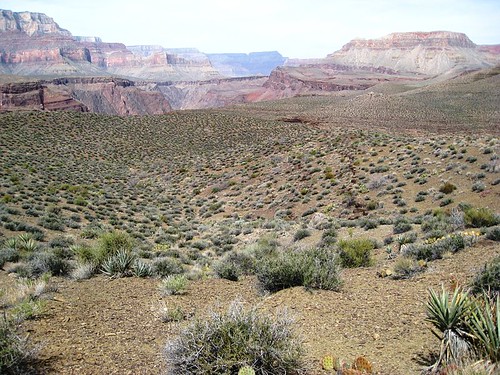
Climate change’s threat to forests – specifically to trees – has garnered much attention among people concerned with protecting our environment. Yet, a lack of research on the effects of climate change on grasslands and shrublands is leaving land managers with little information to make decisions on sustaining these vital landscapes so important for recreation, tribal life, crop and livestock production, and native plant and wildlife conservation.
Forest Service researchers point to recent climatic studies in predicting that by the end of the century, 55 percent of future landscapes in the West will likely have climates that are incompatible with the vegetation types that now occur on those landscapes.
According to Dr. Deborah Finch, program manager for Grasslands, Shrublands, and Deserts Ecosystems Science at the U.S. Forest Service Rocky Mountain Research Station, there is direct evidence of the effects of climate change on bird migration, plant and animal distribution, and water reduction in the interior West.
Scientists and researchers from the Rocky Mountain Research Station in 2010 began working with colleagues across six states and from the University of New Mexico, University of Arizona, University of Wisconsin and Dryland Institute to produce more data to guide land managers.
In a report called Climate Change in Grasslands, Shrublands, and Deserts of the Interior American West: A Review and Needs Assessment, the scientists summarized current research on climate change and its potential effects on grasslands, shrublands and desert ecosystems.
The report addresses animal, plant, and invasive species models and responses, as well as vulnerabilities, genetic adaption and habitats. Scientists also provide information on decision-making support tools for restoration and land management of desert shrublands, which can store 30 percent more carbon than the average regional plants.
Some key findings of the report:
- By the turn of the century, climate in the western United States may be incompatible with current vegetation types, resulting in shifting patterns of terrestrial ecosystems.
- In arid and semi-arid shrublands and deserts, invasive grass species with higher flammability, like cheatgrass, will spread and increase fire frequency and range.
- Increased temperatures can affect insect development time and result in significant increases in generations per year/per habitat and expose new environments to colonization.
- Drying rivers and wetlands are likely to become overriding conservation issues.
There is an immediate need for improved tools and approaches for assessing vulnerabilities and conserving diversity of all lands. The Rocky Mountain Research Station is committed to helping genecologists, modelers, nursery and plant materials specialists, biologists, social scientists, and economists develop new techniques for protecting and restoring western lands.
